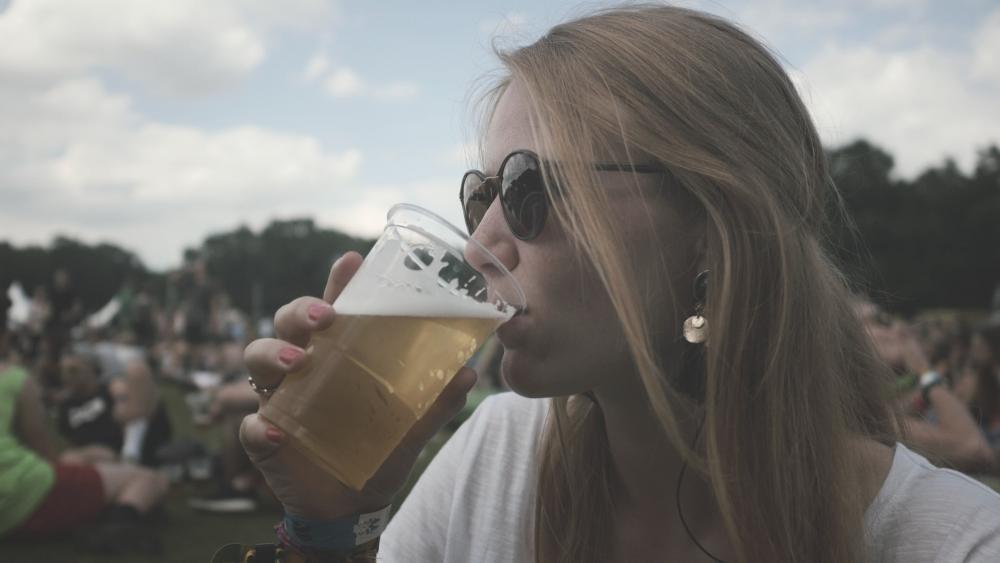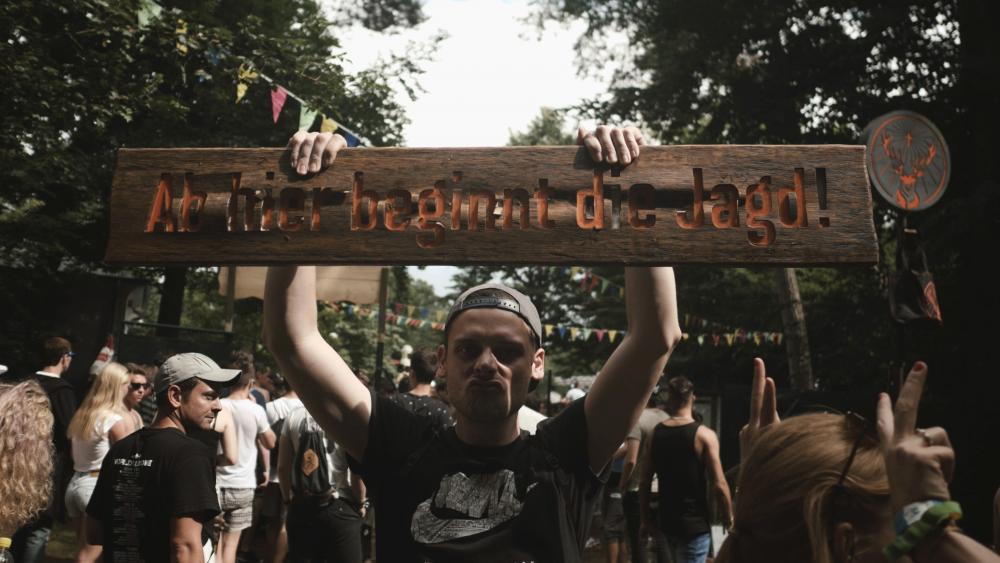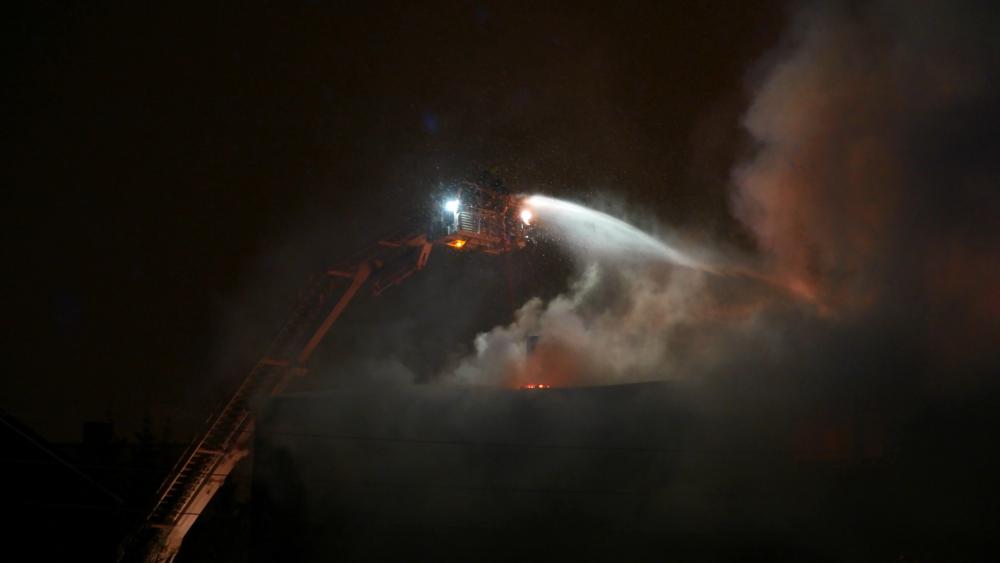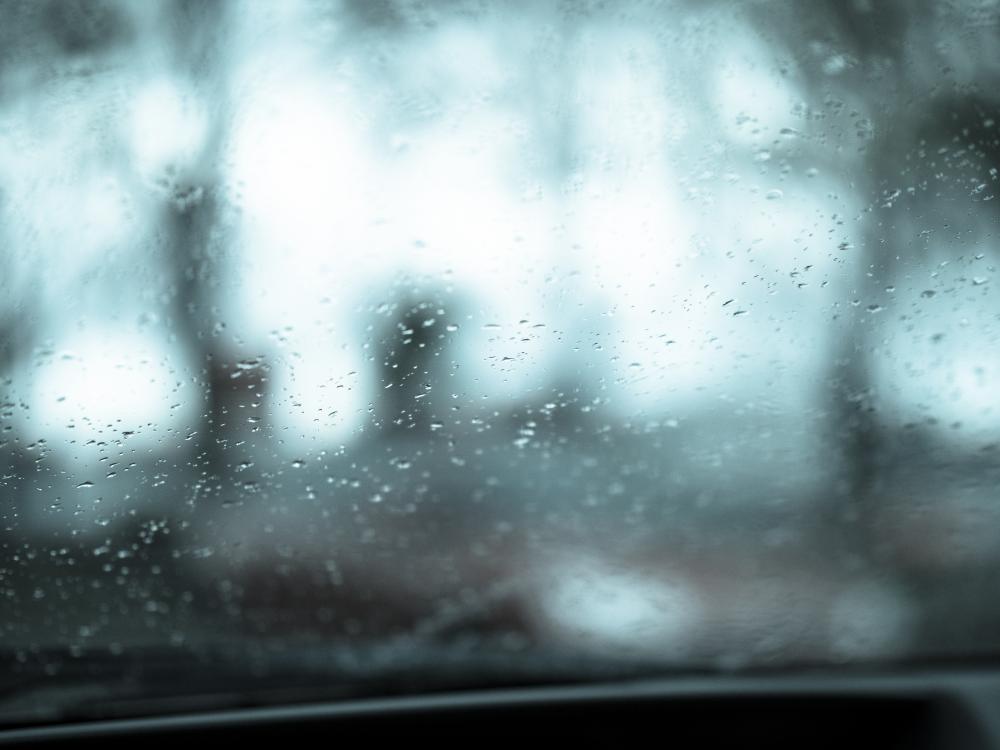Leaderboard
Popular Content
Showing content with the highest reputation on 06/06/2017 in all areas
-
Canon C200 vs Panasonic GH5, a preview
deezid and 2 others reacted to johnnymossville for a topic
We just completed a 3hr/3part documentary here at work using Resolve. It's definitely up to the job now. There are still some issues, but overall it's there. Panasonic's color is now extremely close to Canon if you like the Canon look. It's much harder to get Sonys to look like Canon. I wouldn't hesitate to use a C200 and GH5 on the same shoot.3 points -
Hey! Recently I did a Promo video for a XCO bicycle race, and the intro was shot using my DIY'ed anamorphic adapter from the 35nap 2-3. I'm pretty excited about the image I can get with it. The adapter though still needs some work to be a bit more precise in lens alignment, and of course some solution to double focus would be awesome. But for projects, where I have time, I'd try and shoot with it the next time also. Probably a bit too much color effects in the intro to fully enjoy the anamorphic image, but it still shows through.3 points
-
Here it is used on GX80 cinelike D, GH5 (12-35) - wide angle, slow motion (cinelike D) , GX80 - Longer lens (pan 42.5 1,7 ) cinelike D GX80 shot - 0:34 , 1:16 , 1:43 , 1:46 , 1:59 , 2:11 , 2:13 , 2:16 , 2:21 , 2:42 , 2:44 , 2:45 , 3:15 , 3:17 , 3:19 , 3:23 , 4:32 , 4:44 all shot on GX80 is handheld ,one hand, the other hand holds the gimbal with GH5 :-)3 points
-

Canon C200 vs Panasonic GH5, a preview
Trek of Joy and 2 others reacted to Jimmy for a topic
It's not like this is the first ever raw camera.... Not really sure what the debate is here. You either work with raw like you would film (as we have with blackmagic, Canon ML etc)... you choose the 8 bit codec which will be great for most things (firmware version) or you use something like Atomos/Odyssey to capture raw to Prores 10bit. Can't help but think that if it were Panasonic that had launched a camera with raw, this article would have a different tone.3 points -

Canon C200 vs Panasonic GH5, a preview
jhnkng and 2 others reacted to AaronChicago for a topic
You're going to spend more money on CFast 2.0 cards than the actual camera.3 points -

Canon C200 vs Panasonic GH5, a preview
Kisaha and one other reacted to Trek of Joy for a topic
+1 I'm thinking the same thing, this camera covers all the bases nice. And as we know from the c100, not all 8-bit footage is created equal. Really wish Canon used the same codecs in the 5d4 so we'd have a viable stills/4k b-cam option in the Canon ecosystem. Maybe the 90d gets 4k? The 70d got DPAF first IIRC, so there's an ever so slim chance. I'm looking to shoot a couple docs in the next year, this one ticks more boxes than any other camera in the price range.2 points -
Canon C200 vs Panasonic GH5, a preview
Orangenz and one other reacted to Fritz Pierre for a topic
Ahhh... the pink elephant in the room with digital cameras is and always will be secure storage...and the task is expensive and in the case of say a film, storage is vast...redundancy has to be built in...and if done right, a DIT on set...at least one RAID on set and another at the editing suite, plus an additional different back up system to hold all the footage backed off the RAID every day at the end of the shoot...so for anyone scoffing at the cost of the media to shoot RAW on, check out the cost of a couple of 32TB RAIDS....the one below has 8 drives...you can RAID 6 storage off 4 drives, so with good security you land up with16 TB of RAW storage...at 17,000 ...now do the math of how much footage you will land up shooting to finally land up with an edited feature of around 100 min...this of course does not include a recorder for additional backing onto to tape...runs you multiple $10,000s for just the read write drives alone...not including the cost of the tape...so with any of these systems it can be a bit like buying a used yet very beautiful Mercedes with the last of your savings and having nothing budgeted for maintaining it through the years, so it turns into a chicken coop....of course one could wing it...risk the moments and the time and the expense of the crew...and the time the actors give you...paid or for free...but if they move on to other projects...locations change or are no longer available...the short of it is, you do it properly and professionally...with a less data heavy codec/capture system and back everything up, as it should be. https://www.bhphotovideo.com/c/product/773921-REG/JMR_ELECTRONICS_EXTN_8_G4_32T_32TB_16_Bay_PCIe.html2 points -
Lens looking awesome. The Meteor zoom for the Krasnogorsk is much cheaper but not with that kind of image.2 points
-

Would You Perhaps Be Interested In A Different GX80/85 Colour Profile???
Mark Romero 2 and one other reacted to BTM_Pix for a topic
OK So for anyone wanting to try this, I have made a really simple method to do it. I have tested this numerous times on my GX80 and it has lived to tell the tale but obviously do this at your own risk. All that this process does is fool the camera into thinking its talking to the smartphone app and then the commands it sends are exactly what the smartphone app sends. Or would do if the smartphone app thought it was talking to a camera equipped with Cinelike D ! So as such it is only getting sent what the Panasonic app would be sending to it so there are no hacky or sneaky debug things getting sent to it. Again, though, proceed at your own risk. Although I would say, if you’ve tried that region switching hack on YouTube with the 10 million key press combos during power up then you’re already brave enough to try this! Bear in mind that my unit is a GX80 and the firmware is version 1.0 If you have a GX85 or have got a different firmware then I just don’t know because obviously I haven’t got any other devices to test it on. Here we go then…. Follow these instructions exactly and you should have Cinelike D on your GX80/85 You will need a laptop or a phone with a browser, the camera and to download the simple html file attached. 1) Switch on camera and turn on wifi as though you were connecting the app and you should see the waiting screen on the camera 2) Load the Deploy Cinelike D.html file into your browser 3) Select ‘Handshake’ 4) You should see the browser page change and it confirm that its connected to a GX80 5) Hit the back key on the browser 6) Select ‘Connect’ 7) You should see the browser page change to say ‘ok’ and the camera give you an ‘Under Remote Control’ message 8) Wait until the camera screen shows you a live view 9) Hit the back key on the browser 10) Select ‘Deploy’ 11) You should see the browser page change to say ‘ok’ and the camera should NOT now be displaying the Photo Style you had selected (i.e. Standard, Vivid etc) 12) Cinelike D is now active on the camera 13) If you go into the menu on the camera and select Photo Style you will see that it is blank and you can’t navigate to other Photo Styles such as Standard etc. 14) To restore the Photo Styles hit the back button on the browser and select ‘Restore’ and the camera will display the Standard photo style and you should then be able to go into Photo Styles and change them. 15) Repeat 9-14 to switch between them to your hearts content! So, like other settings, the Cinelike D profile will persist when you switch the camera off so if you want to use the other Photo Styles again then you MUST go this process again to re-enable them. However, if you would like to switch between them without using this method again (and who wouldn’t) here is a neat way round it. When you’ve done Step 12 and got Cinelike D on, set all your other parameters (4K24p etc) as you’d like them and save these into C1 of the custom settings. Then go to Step 14 and use the ‘Restore’ to get your standard Photo Styles back, set all your other parameters (4K24p etc) as you’d like them and then save these into C2 of the custom settings. Now when you switch the camera on, you simply choose C1 to have Cinelike D or C2 for the standard Photo Styles and forget about using any nonsense about using browsers and wifi connections! In couple of weeks I’m hoping to show you how you can do stuff like this and some other useful bits and pieces from a little hardware gadget that will work on the Panasonic cameras but have fun with this in the meantime. DEPLOY CINELIKE D.html2 points -
Master black levels are only useful if you want good straight out the camera images, its pointless to use this with GammaDR as it wont provide any dynamic range improvements. Crushing blacks might be good for aesthetics reasons, these systems shoot superb colours out the box and the fact you can tweak them to your liking is a really good thing and I think Samsung did a really well job with this I still want LOG though but yeah avoid if you just shoot flat as its mostly for aesthetics reasons. Check here for some epic results: I been experimenting a lot with the colour profiles in the NX1 and NX500 but I been too lazy to edit the videos together and published them on YouTube. I got a really good footage of a terrible housefire this winter using in-camera colours.1 point
-
Haha, yeah I guess but maybe the second child will be the child we always really wanted... If at first you don't succeed, try, try again.1 point
-

The Canon C200 is here and its a bomb!
Jaime Valles reacted to DBounce for a topic
Looks good to me. Have to see what Panasonic brings, but as of now I am definitely leaning towards the Canon. It seems to match really well with the C300. Feels organic, with nice motion cadence. I'm thinking of the C200B with a loop for the LCD, or possibly... if that proves difficult to deal with a separate EVF. Not sure if I'll spring for the Canon CN-E 18-80mm T4.4 also, or just use my L series lenses. It's food for thought.1 point -
This kind of match making has already produced the unexpected outcome called the XC10/15.1 point
-

Transcoding anamorphic footage
AaronChicago reacted to Ian Edward Weir for a topic
I do it in my work flow. I shoot GH4 4:3 4k with 1.75x and stretch to 5k 2.35:1 - 5120x2179. I then build a dailies sequence and do a media management transcoding to Pro Res or go clip by clip adding an in and out. I export out 5k Pro Res and then edit and finish on a 4k timeline 3840x2160. I have a Mac Book Pro from 2012 and it works like a charm. I do allot of nature films and do it this way so I have a collection of 5k pro res footage.1 point -
Canon C200 vs Panasonic GH5, a preview
Fritz Pierre reacted to Thpriest for a topic
Can we not get the Canon C200 and the GH5 to have a love child which weighs the same as the GH5 and has 5 axis stab but has Canon look and ergonomics? Who's going to be first to leave the 2 cameras alone in a room together...1 point -
Seeing as this hack was about combining features from other cameras by harvesting commands, its quite apt to see it being used to shoot combine harvesters !1 point
-
Well the absence of mid/high range codecs does seem a little odd on the C200 even though better codecs seem planned for next year.. It is great news to me though that Canon have included internal RAW recording. That along 4K, Touch screen, DPAF and improved ergonomics make this camera almost a no brainer. I do think that it's competitors aren't so much mirrorless/DSLRs but Ursa Mini Pro, EVA1 & FS5/7 etc Now about the RAW debate, it's true it's not for everyone or every project. The size & workflow are definitely hard to manage. I'll admit I seldom use ML Raw on my 5D3 even though it's footage & resolving power beats by far any of my other cams.. but that also has to do with ML Raw workflow which has added perks.. Even a show like Netflix's 13 reasons Why which was shot on Varicam35 that supports RAW was recorded in AVC-Intra 444 (12-bit) to handle decent file sizes, fast workflow yet deep grading capabilities.. YMMV1 point
-
Yes, its an absolute value so you have to change it to a specific figure rather than just having a plus or minus button that you can hit. And yes with it being a hidden function it won't show up on the camera screen to be edited. Well, my forthcoming gadget will be able to do that way of course ...........1 point
-
Works with my GX80 firmware 1.2!!! Thanks!! BTM So is there possibility to alter hue on the fly (like sharpness-contrast etc) or only by altering the number in the command as you say?1 point
-

Two Things I've Learned - Shooting 16mm Glass on the Blackmagic MIcro
Kurtisso reacted to Ed Andrews for a topic
This looks amazing. Really gets that super16 feel. I've been shooting a series of docs with bmmcc and zeiss 12-120. Here's one. It comes out a bit sharper than the Angeniuex but still love the whole combo with old s16 glass1 point -
the cheapest good mic for DSLR and interviews
Gregormannschaft reacted to HockeyFan12 for a topic
Thanks! Feel like I got a good deal at $199.1 point -
Thanks for this. I just read the transcoding/proxy GH5 thread. It had this information also. Thanks again!1 point
-
https://www.dropbox.com/s/nt2uqr5pp9xi1st/GH5 10 bit fix.pdf?dl=01 point
-
Depending the use, the OP has to come back and help us - help him! What is the best mic for my case (and uses), ain't for you, ain't for him, etc With sound we have to be realistic for what we want to achieve and how. The best way to do it, is take the microphone close to the source, as easy as that sound, it is one of the most difficult tasks since sound were put on celluloid! What I said, is that very directional/shot gun type microphones are the worst to put on a camera, it is a terrible idea really. I did a music documentary series, 1 year with 416, then 2 with the Rode, and when I came back to the 416 for the 4th year, it was a revelation! I never used the Rode ever again. The 600 is a great mic, it really is a different approach of the classic ME66 mic, which again was my back up mic for many years. I do consider getting the 600 for some specific uses, but I also do consider the 440 for camera mounting, for scratch sound, maybe atmosphere and what not. As you see I really like this brand, it is because I have used most of the others, too! PS: sorry HockeyFun, I run out of Up votes! Glad to see the old voting system back!1 point
-
It isn't even close, and you can not tell from this kind of test here. I have seen this guys videos, and honestly doesn't seem like knowing a lot about sound. He has a video about the MKE440, check that as well. I am using 416 for 19 years now and a lot of microphones in the market. 416 ain't an amateurs, or a video person's mic. Most of the times, the criticism of the 416 is coming from people that they do not know what it is and how to use properly. Of course there are other great mics right now (look at everything more expensive than the 416 and you will see a lot of options) with more moderns approaches and technology, but in the most difficult day, when I do not know what to expect, and the weather is weird, then the full Sennheiser kit (blimp and mic) is my best bet. MKE600 is a great mic for the money, but it isn't even close to the 416 (the price shows anyway). There are other things that affect the pricing, like construction, durability, loose of sound characteristics through time, etc MKE series has the 400 and 440 (stereo short shotguns) as well, better look at those last too, they are more appropriate for camera mounting. The 440 especially is a great idea, is stereo, covers a lot more space in front of the camera than a traditional mono mic (and much more than shotgun type microphones), has an internal amplifier to by pass the usual terrible internal ones, you can buy a dead kitten (the hairy thing we put around microphones to cut air), so you can use it with moderate (rather low) air, and most importantly is a directional stereo mic, so you can concentrate to what is in front of your camera, "best" (that is so relative, I can't believe I typed it!) for small groups, or two persons interview as well. Other stereo mics are good for recording ambience sound, NOT dialogue but that's best to do it NOT with a mounted mic, and not while recording (because of the various noises we produce while filming).1 point
-
Panasonic GH5 - all is revealed!
Cas1 reacted to Rinad Amir for a topic
1 point -

Canon C200 vs Panasonic GH5, a preview
Eno reacted to Andrew Reid for a topic
Dude, there are crews with an Alexa that shoot ProRes instead of raw. Pros are terrified of a slow turnaround on an edit, large file sizes and un-editable codecs. Why do you think internal raw is missing from the C300, FS7, FS5 and a bunch of other popular pro workhorses? At $8000, by mainstream you don't really mean mainstream, rather 'popular within a niche'. This is pure speculation! Just do the maths... 1 hour of footage = 512GB of CFast 2.0 media It will be a top quality card as pros don't risk an entire day's shoot for the sake of saving a few quid. And performance of the card will be a factor. So you are talking £4900 of media to get you through just 7 hours of shooting, assuming you have one camera at the wedding / commercial / live event / interview. If it is two cameras double your costs to £10k. The guy who said you would spend more on media than on the camera wasn't joking!! Now tell me the pro shoots that involve 15 minutes of shooting before it's all over.... Not many of those sir. Yes, you can offload 128GB every 15 minutes, stop the shoot every 15 minutes as a result, or employ a data wrangler armed with a very large hard drive... It's a big expense and hassle either way you look at it and it won't catch on, thus raw will not be mainstream with pros via the C200.1 point -
Canon C200 vs Panasonic GH5, a preview
Trek of Joy reacted to mercer for a topic
I said this a few days ago and I waivered a little bit yesterday but I think Canon really listened to the market here and once the FW update is released, early next year, this camera will be an all in one solution for many tasks. For your lower rent jobs, you have the 150mbps MP4, for the higher profile clients, you'll have the 302mbps XF-AVC (assuming they use the same as the XC10) and then for narrative, docs, and music videos you'll have Raw Lite. It seems like a great idea to me. Now even though I doubt I'll buy one, although I may rent it, I wouldn't need the full kit, so the 200B is even more appealing... 15 stops of DR at 12bit Raw with touch DPAF plus a plug in to edit natively in FCPX... all for $5999? I'm still surprised they even got this camera approved for production.1 point -
I think 95% using MP4 is very realistic, on average we bring in hundreds of GB footage per day in MP4 (sometimes much more if we have lots of shooting at once on difference location), can't image what RAW will gonna bring.. no one is gonna shoot raw on live event/interviews etc.1 point
-

Panasonic GH5 - all is revealed!
Hanriverprod reacted to funkyou86 for a topic
Very nice! Here's mine with Canon 85mm and Lie709 Sigma 18-35:1 point -

Canon C200 vs Panasonic GH5, a preview
Thpriest reacted to Oliver Daniel for a topic
It's an interesting comparison, that's for sure. There's 2 types of people who buy cameras : those who do it for a hobby, and those who do it as a job. You have to ask yourself one question when buying a camera: Does it make my life easier? This of course can be broken down into the size, weight, features etc that will give you an incredible advantage over what you already have. A significant difference that will change things for the better, when you're making videos. I have an FS5 with RAW upgrade and Shogun Inferno. I've spent little bits of the past few days to try and convince myself that a C200, EVA1 or even a GH5 would overall and fundamentally make my life easier. For the better. For the art. For the long term bank balance. How do you measure that? (p.s I much, much prefer using GH5 sized cameras above all else. I LOVE the pictures from a Canon. I don't love using the Sony, but they have all the features I need).1 point -

Canon C200 vs Panasonic GH5, a preview
Saskamodie Jones reacted to Andrew Reid for a topic
Canon raw lite is not Cinema DNG though. At the moment you have no choice but to turn it into some form of LOG before grading the compressed files instead of the RAW. So it is not really RAW, just a fiddly way of getting 10bit ProRes out of the camera.1 point -

Canon C200 vs Panasonic GH5, a preview
Saskamodie Jones reacted to Andrew Reid for a topic
Nobody complains when we compare the FS5 to an A7R II. People need to know what extra they are getting for their money. Sure the market is a bit different and form factor different but there's overlap... You can't tell me not a single pro is using an A7R II or GH5, can you? By that same token, not every pro videography or wedding guy is using the SDI on their C200, whose biggest selling point to many people is the lack of need to rig extras onto it like external recorders and monitors via SDI. Not every pro is using timecode to sync footage between 5 other cameras on a shoot and not every C200 user will even be using the XLRs, some will strip it down to the bare bones and put it on a gimbal, with sound done like it has always been done in the film days - a separate job for another man. So shut up.1 point -
I use ursa mini 4.6k for a couple of months now and 99 percent i shot raw 3:1 and 4:1. I use Cfast to sata breakout cable and record straight to couple of 500GB samsung 850evo SSDs without ANY problem. I dont understand crying about 15min on 128GB card - it is the same like on UM46K - 60min on 500GB. I have 4 SSDs, when i record in 2,4:1 aspect it gives 80min (25fps) /500GB so 320 minutes on four. SSDs are cheap. I also work straight from SSDs in resolve which is very convinient, no data copying. Adding 4 SSDs more and you have 10 hours worth of cards, should be plenty for a day shoot. For storing i can render very nice ProRes HQ BMDfilm version out of raw easily and fast. I only wonder if there will be possibility to open CFast door (to put Cfast breakout cable) in the C200 and still have camera working (5d swithces off when card doors are opened - which of course would be very bad). Everybody are waiting for GH5 400mbit codec - wait a minute, couple months ago people cried about 500mbit mjpeg codec from canon. It was sooooo ineficient, so hard to store etc. And now 400mbit is holy grail...1 point
-

Lenses
TheRenaissanceMan reacted to Cinegain for a topic
Thought we cleared this up 2 weeks ago already... it's a matter of perspective... actually, more one of wallet and sensible spending. 'Is it worth it?' is so subjective. To the one: yes, to the other: no. There's no definite right or wrong here. Just whatever works for you. Depends what you are looking for. In terms of absolute quality, the Leica 42.5mm f/1.2 probably is the best thing ever to have come from the MFT system. I'd love to see someone denying it's any good. Personally, I have gladly paid the price for the Leica 15mm f/1.7, Olympus 75mm f/1.8 and Sigma 30mm f/1.4 DC DN which are MFT lenses (see? I'm not opposed to that), because at those prices you're actually getting shockingly good value/quality in return. But that 42.5mm f/1.2 by Leica has such a pricetag, that it's just not for everybody. That doesn't mean they don't like it, or that it's not worth it for some... just not to them (made up scenario: would you pay a 80% jump up in price to get 20% better quality? Maybe you would, maybe someone else wouldn't). There's a lot of things you can do with money, so most are probably thinking twice before spending well over a thousand bucks on a single focal length lens (it's great that you are able to do it, doesn't mean others can or should). Instead of shooting the 'wildlife' that visits the garden with the incredible 42.5mm f/1.2, maybe someone would rather settle for the Sigma and buy tickets to fly somewhere for the weekend to change up what's in front of the lens, instead of the lens itself. What ends up being captured ultimately is priceless, that's a combination of light, subject, scenery, composition, timing, etc... the lens is just a supporting actor in the grand scheme of things. So, I wouldn't say adapted lenses are superior to ones that can natively be adapted to the MFT mount... nor have a seen anyone claiming that this is the case period. The Leica 42.5mm f/1.2 is probably the best thing you can throw in front of your GH5 or whatever camera. But... there are certain benefits of adapting off-system lenses. Like: spending less money, maybe leaving more money to buy more lenses, like a set of primes in different focal lengths with matching character. Or trips... or supporting gear, lighting, audio... or just saving up money, because it's a healthy thing to do. Obviously you can use off-system lenses on non-MFT systems. E.g. I have the Nikon D5300 that takes pretty awesome stills, so a lot of my lenses are in Nikon-mount, which probably is the most flexbile mount out there, even allowing Nikon mount lenses to be adapted to Canon mount cameras (or adapters). Plus, most modern lenses need electronic adaptation with Canon lenses for aperture control, when the same lens in Nikon mount allows you to use a mechanical interlink, so a simple ring on the adapter takes care of it. You can boost f/1.2 and f/1.4 lenses beyond what's possible with a native MFT lens too. Of course there's trade-offs, either you don't get any electronic control over aperture, autofocus and stabilization or the implementation is less effective than that with native lenses. The lenses with added adapter are way bulkier, et cetera. But adapting is a dope option to have! Also, I really love APS-C/S35 performance and its look. I think in 2 or 3 years the switch is happening and then all my MFT lenses will be rendered useless. In the ideal world, we'd all have infinite amounts of money and would just get the best in everything. In the real world, we all have different situations, different philosophies, different budgets, different wants, different needs and different possibilities. Some people go to the grocery store and buy the cheapest grinded coffee there is and let their coffeemaker brew 'em a pot. Some buy expensive beans from some ethical natural brand and by hand process the beans and press 'em into a single cup of coffee. And then there's people who go to Starbucks. Hey, in the end, if everyone's enjoying their coffee, it's all good, right?1 point -
FS: Cine-nikkor 25mm f1.8, c-mount
Justin Bacle reacted to mercer for a topic
Well you have been doing your research. Good on you. I only have a minute, I'll reply more in length later... Have you looked at any videos with the Meteor lens... I think it's a 16-69mm. It won't give you the semi-wide but it's a good one lens system if you want that 70s film look. See below for a video I found online when I was looking to get one... I love that look I had a love hate relationship with the Micro. At the time, and now, I'm forced to work on no budget, run and gun narratives. I write, shoot, direct and edit them. Well I am doing that now, finally. Anyway the Micro drew too much attention, so it wasn't good for my purposes, but I loved the images it produced. Since then I've used a 50D, a Pocket, another Pocket and now I have finally settled on a 5D3. I liked the Micro image better than the Pocket, it seems slightly different, but I prefer the form factor of the Pocket and I prefer everything about the 5D3 over the two... except I can't use an old c-mounts with it.1 point -
Clearly this camera is not meant as an A-cam to GH5 B-cam... it is meant to be a B-Cam to the Varicam LT. This is why it uses the same mount as the Varicam LT. This is why it's color science will match the Varicam... not the GH5. This is why it is designed to be mountable on drones. When people say M43 is not meant for professional work, it is not the same as saying no professionals use m43. I think we all know pro work has even been done with smartphones. But in most cases, m43 will not be the ideal choice for professional engagements. Moreover, the DSLR form-factor in general is not ideal for professional video work. However, it does have it's uses. I think it's fare to say the with the introduction of the EVA1 and C200 we are moving into a new era of budget filmmaking. We now have compelling options from Canon, Panasonic and Sony, for true video cameras, with real XLR imputs, SDI, remote, network, timecode etc... You might notice that I left BM off that list... I consider them more of a niche player. I think most that are drawn to the former brands will not jump on BM as these cameras have a reputation for not being the most dependable option. So for those of us that require good customer service, and rugged hardware the BM will remain something that only sees use in personal projects. I will not purchase either camera until all the smoke clears. I need to see finalized specs and footage from Panasonic. And I will not buy the Canon until I hear details on the implementation of the XF-AVC codec. Will it be 8-bit or 10-bit? And will it be a paid upgrade? Will it ship on later cameras for free? At present I am leaning towards the Canon, but that could change if Pansonic brings their A-game with the EVA1. These are interesting times.1 point
-

Would You Perhaps Be Interested In A Different GX80/85 Colour Profile???
Helder Mira reacted to Novim for a topic
The best discovery since Alfred Einstein's autoexposure. A new life for my dear GX85.1 point -
C200 looks great -DPAF, Canon colour science and internal RAW. Now if only Canon can put DPAF and internal RAW into the XC20.1 point
-

Metabones Speedbooster Ultra or XL on GH5?
kidzrevil reacted to Andrew Reid for a topic
XL with full frame lenses. Ultra with APS-C, otherwise on the XL + APS-C lenses you will get vignetting, regardless of IBIS.1 point -
XL was designed for GH4. Many users already had the XL and they bought the GH5, so you see the XL used more often. While XL accomplished its original mission and still did great with full frame lenses, GH5 had bigger coverage to begin with, having no 4k crop at all, and on top of that you need to give a little headroom for the IBIS to operate. You don't want an entire stripe of black to come up every now and then when you handhold (with XL and APS-C lens). If you don't want IBIS why didn't we stick with GH4? Everyone seems to be using the Sigma 18-35/1.8 and on GH5 an ULTRA is required. Of course XL if you use only full frame lenses.1 point
-
This camera takes SDXC, and let's get real for a minute: raw is wholly unnecessary for 98% of the camera's target market. The Varicam LT may be 'only' a few thousand more - but Starr factoring P2 cards and the price jumps drastically. And since when does the LT do raw internally..? The FS7 doesn't even have a proper EVF. Stick a loupe on the LCD and voila - you've got the same solution as the FS7. You know the URSA Mini also doesn't come with an EVF? And really, the 'back of the body' EVFs on the C series and FS5 are next to useless. But sure, feel free to denigrate a camera based on the cost of wholly unnecessary accessories1 point
-

Would You Perhaps Be Interested In A Different GX80/85 Colour Profile???
Nathan Gabriel reacted to Andrew Reid for a topic
Great work @BTM_Pix On the GH5, maybe we could unlock that 400Mbit 4K mode ahead of time CineLikeD on the GX80 is a great start.1 point -

Improving GH5 colour - comparison with 5D3 RAW
austinchimp reacted to hyalinejim for a topic
Here is the LUT for colour correction only - the V-Log gamma remains unchanged. This should be first in your post pipeline. https://drive.google.com/open?id=0B1exEpCRAfgFcVdtSXhRdmJvalE1 point -
I think I must've meant 18-200 So we can downgrade that to merely massive and very very expensive! I did actually have some rational basis for how that could be achieved but I'm fucked if I can remember what it is now.1 point
-
Buying Canon XC10 in 2017.
Thpriest reacted to jydurocher for a topic
I hope that Canon doesn't drop the XC_* line. My XC-10 is a little marvel of right compromises. Wish list is quite simple: a) Servo zoom (could be an add-on with its own batteries) b) A wider and faster lens c) A more complex flash shoe (with audio and HDMI video out) plus a bottom strip with all i/o plus power. So you would have: a) XC-10 plus add-on servo b) XC-15 Never understood the concept c) XC-20 (the 10, plus the servo and I/O) d) XC-30 with a wider-faster servo lens and the I/O The price point is easy to figure out, both the XC-10 and 15 drop by 500$USD And the new 20 is a couple of hundred more than the XC-10 while the 30 is a $1,000 Stretching the wish list would be a bare XC with a mount, only an on/off button, no side-grip. Only a HDMI and USB plus a back or under plate for batteries and holes galore. Controlled by wi-fi or USB. At $3,000 it would make a killing as an expendable camera. Going against the Canon faith would be to add support to the new hi-speed SD card, but this is asking too much.1 point













